The Scott Library has been in operation for almost 39 years. During its lifespan it, along with the rest of the world, has seen a multitude of changes. This post intends to shine a light on some of the (almost) forgotten aspects of the Scott’s yesteryears, before the space is but a memory…
Pre-1984: A Tale of Two Libraries
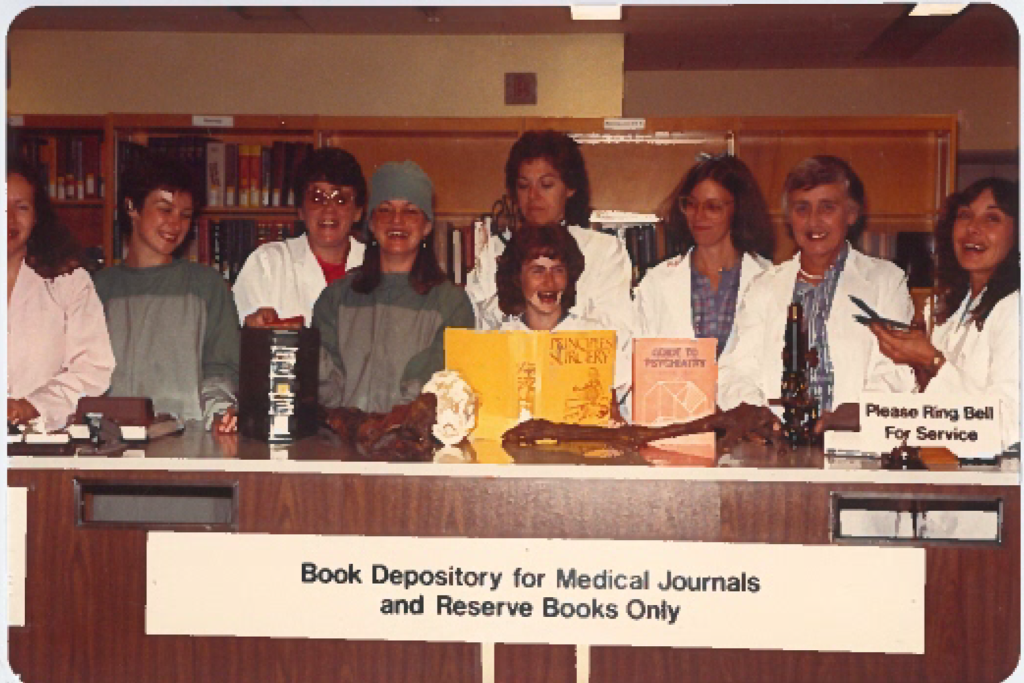
Before the Scott Library was a glimmer in University and Library administrators eye, the University’s health sciences collection was scattered across two locations: the 5th Floor of Cameron Library and a small location in the original University Hospital affectionately referred to as “The Little John Scott”. The Little Scott served doctors and residents working in the Hospital, enabling them to access the latest articles and publications needed to stay up-to-date and provide informed health care. Cameron library’s health sciences collection served students of the health sciences in the early days of their training. Of course, given the space limitations in the Little John Scott the sharing and transfer of materials between the two locations was a must. With the collection growing and demand for the latest materials proceeded unabated, a new library was needed.
In the mid-seventies a proposal was put forward to build a state-of-the-art hospital and Health Sciences learning hub to replace the existing University Hospital that had been in use since 1913. This complex would become the Walter C. Mackenzie Centre and among the facilities included in the plan was a three level space that would accommodate a singular Health Sciences Library. Read more about the Walter C Mackenzie Centre here
The Early Years (1984-1994)
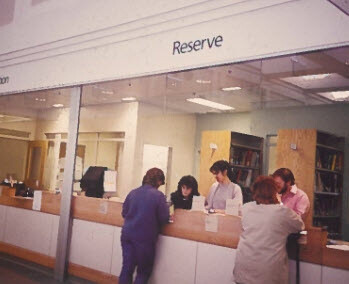
After the predictable delays associated with any large-scale building project the new John W. Scott Health Sciences Library opened its doors at the beginning of October 1984. With rows of skylights lining the length of the space, two levels that look down to the lower level of the space and large windows on the North and East walls, the space afforded library users with a multitude of natural light. The space celebrated its grand opening on October 31, 1984. On that day, the Phyllis Russell Rare Book Room (named after the former Head Librarian of the Little John Scott) was dedicated. That room was home to the Rawlinson Rare Medical Book Collection, whose greatest claim to infamy was a book purportedly made of human skin.
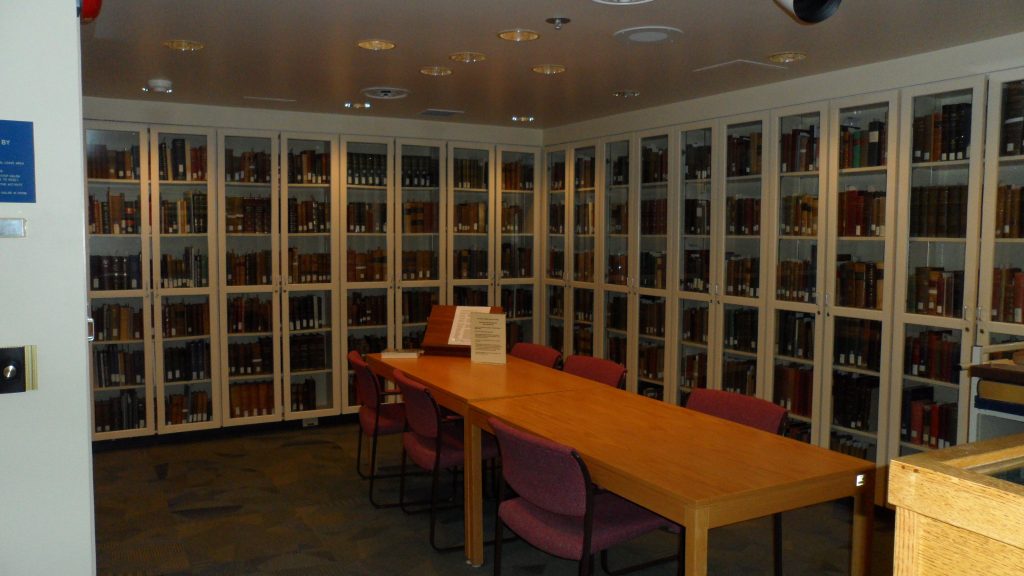
In the pre-internet era the library collection was dominated by physical media and much of the floor space was occupied by shelves. Audio-visual materials were cutting edge, and the Scott Library embraced it by housing a media library containing an extensive collection of videos, slide sets, film strips, PLUS over a dozen carrels where these materials could be reviewed and a couple group viewing rooms. The library offered a photocopying service on the lowest level, which was in constant use. And just as a total sign of the times… there was a designated smoking room on the middle floor.
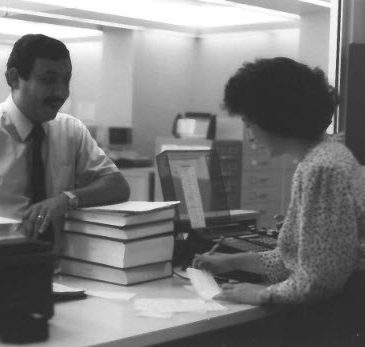
Computer technology was still in its nascent state, and staff couldn’t just scan a barcode to checkout books. Instead they used a punch card system where each book would have a punch card assigned to it. A borrower would have to present their library card and then library staff would insert the punch card into a machine called an EPIC to complete the transaction. If a user wanted to look-up a book they would consult the card catalogue to find a call number. By the early 90’s, library circulation graduated to a more familiar circulation system that utilized barcode scanners.
Have I mentioned the DECWriter? In the pre-internet era, librarians had electronic access to MEDLINE through a machine that looked like an amalgam of a dot-matrix printer and typewriter called a DECWriter. Can you imagine doing a complex database search using a typewriter? Eventually the DECWriter would get upgraded with a PC station.
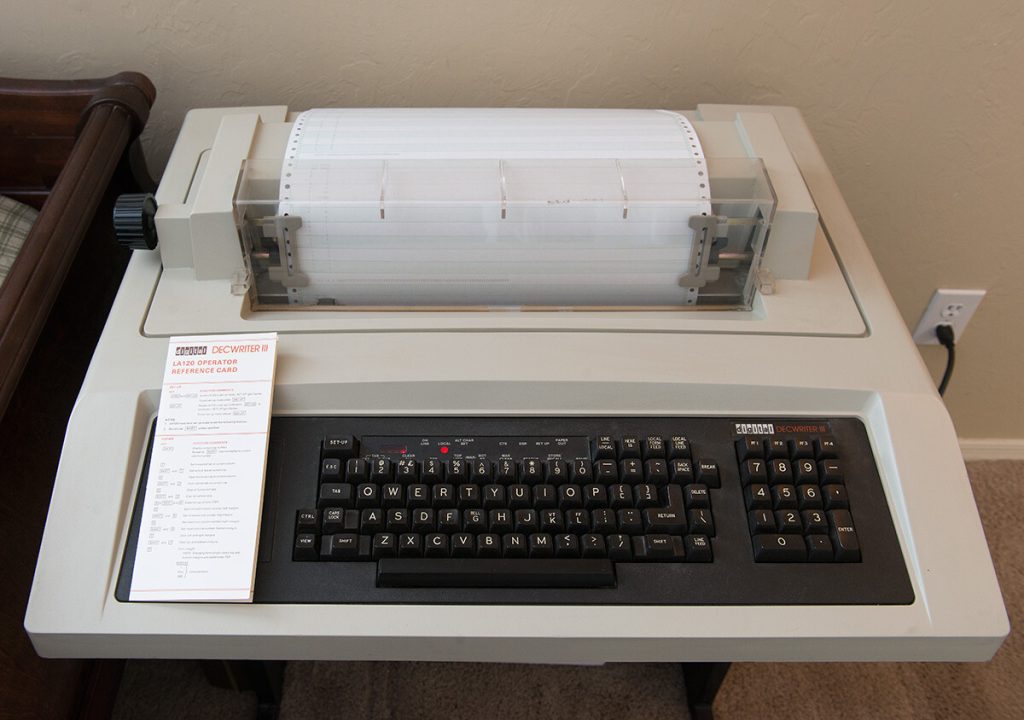
Those who frequent the Scott are probably familiar with the fake spider plants that adorn the banister edges on the middle and top floors. They made their first appearance by the end of this period after the real plants that predated them were removed because it was too labour intensive to care for them.
In part two the Scott Library enters the Internet era and takes its more familiar current form.
Love us on the blog? Then you’ll love us on social media! Check us out at @uofalibrary on Instagram, & Twitter!
This content is licenced under a CC BY-NC-SA 4.0 Creative Commons licence.
